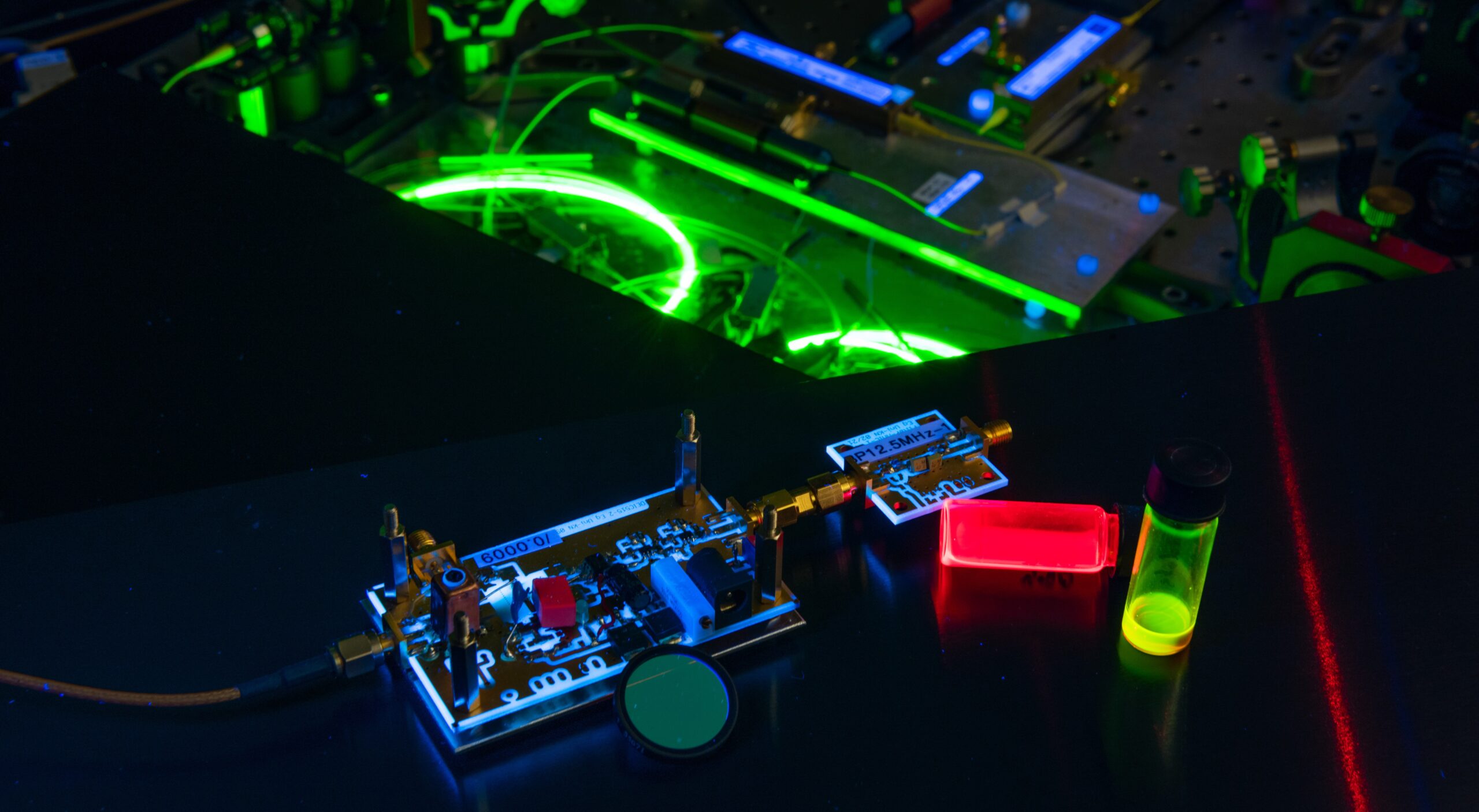In the last few years, quantum computation, communication, imaging and sensing have become household terms that fascinate scientists and science enthusiasts alike. For the optics community, however, quantum states of light have been a topic of curiosity already in the early experimental works of Hunbary-Brown and Twiss (1950’s) and the theoretical foundations laid out by the 2005 Nobel prize laureate, Roy Glauber (1960’s).
In fact, to this day, the most frequently performed experiment in quantum optics is still the one conceived by Hunbary-Brown and Twiss, bearing their acronyms, HBT. In such a setup, light is equally divide by a beam splitter into two beams that impinge on sensitive photo detectors. Roughly speaking, the wavefunction of a single photon propagates into both ports but when interacting with the macroscopic detectors, the photons can be detected only in detector A or B, not in both. Now, one can ask: if detector A sensed a photon, what is the probability of detector B to sense one a time {\delta}t later? Or, in a more technical phrasing: what is the correlation between detections in A and B? It turns out that asking these question and answering them is the most straightforward manner to examine quantum states of light.

Following this tradition, it was natural for us to implement photon correlations as a tool for material spectroscopy. Indeed, with the advent of light-sensing technology [1], we can nowadays perform such experiments with hundreds and even thousands of detectors, an approach that we termed, heralded spectroscopy [2] (see our recent review on the topic). For example, splitting the photoluminescence spectrum of a single quantum dot (semiconductor nanocrystal) on a row of low-noise detectors and isolating events of photon-pair emission, we could resolve an elusive but important quantity, the interaction strength between two excitons at room temperature.

Currently, our group is pointing the ‘photon-correlation flashlight’ in order to shed light on a new topic: the electronic dynamics in quantum dots at cryogenic temperatures (T~4 K). At these temperatures, the energy of the exciton (excited electron-hole pair) becomes well-defined and only a handful of quantum states are occupied. As such, we enter a regime in which the laws of quantum physics play a greater role. The largest obstacle towards observing the ‘quantumness’ of the system is temporal fluctuations due to its interaction with the environment, specifically random variations of the transition energies. We are currently measuring, for the first time the energy dynamics of single quantum dots from the picosecond to the millisecond time-scales.
With this understanding, we aspire to apply heralded spectroscopy of quantum emitters to sense the dynamics of electric fields in solid-state materials providing a nanosecond temporal resolution together with nanometer spatial resolution. Such an unprecedented combination of temporal and spatial resolutions for sensing will hopefully enable us to answer fascinating questions, for example, in the field of ferroelectricity in nanomaterials.
[1] – Bruschini et al. Light Science & Applications 8, 1 (2019)
[2] – Lubin et al. Nano Lett. 21, 16 (2021)
[3] – Conradt et al. Nano Lett. 23, 21 (2023)
